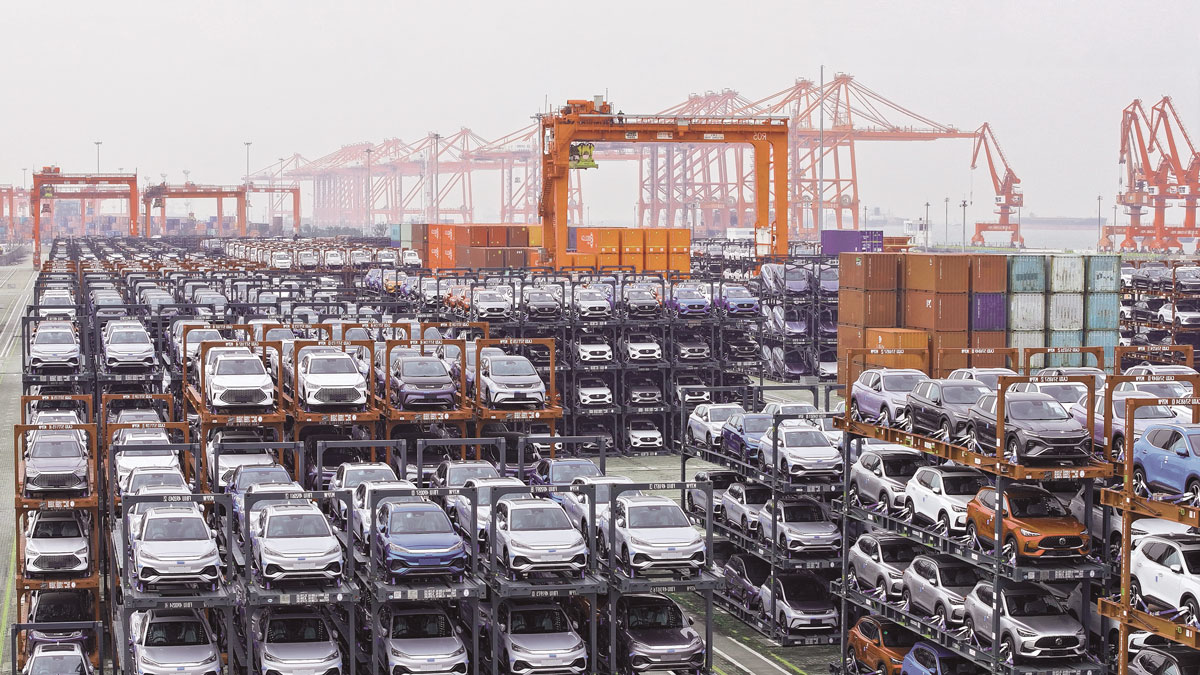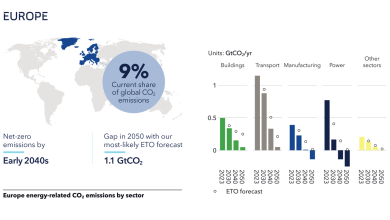EV Is Not to Be? Are We Really Ready for the Electric Vehicle Revolution?
Are electrical vehicles truly the next big thing for the automotive industry? The news would have us believe that everybody and their mother is out buying electrical vehicles like there’s no tomorrow. However, if you ask regular citizens, will they tell you we’re in the midst of an EV revolution, or would they scoff at such a concept? Are we overly optimistic, or are the studies right? We try to answer those questions, and more, in what follows.
Why do we ask the question?
According to a piece recently published by Euronews, EV sales in Europe are not going according to plan. Actually, the situation is so serious that Europe’s ports are starting to resemble car parks. Most of the imported vehicles are coming from China, and they never leave the port of entry as both manufacturers and distributors are facing a decrease in sales. Some anonymous sources even mention that some vehicles have been parked in the port for more than one year.
Sure, we’re talking about state aid and encouraging buyers to opt for electric vehicles, but market trends and real data seem to be clashing. The proof? More than 130,000 cars are currently crowding the ports in Zeebrugge and Antwerp. Where are those enthusiastic buyers?
Of course, the slowdown in car sales is not the only factor. Officials at the Port of Antwerp-Bruges have also mentioned lower road haulage capacity for vehicles and a shortage of available delivery drivers as reasons for this situation. Of course, a lower capacity for short sea shipping of cars in Europe is not to be discarded in this equation.
According to The Financial Times, the problem lies with Chinese EV models that are being shipped to European ports, without a sales network or onward transportation logistics set in place. So, they’re simply not being sold as fast as expected.
On a very related topic, the same publication reports that sales of Volkswagen electric vehicles in the EU are also on a downturn: “sales of all-electric vehicles declined by 24% in Europe, while sales grew by 91% in China, year-over-year.”[1]
Even though the European Parliament is making strides in banning the sale of diesel and petrol cars coming 2035, the reality is that, as of right now, challenges like high costs and a lack of charging infrastructure are driving down the popularity of EV models. As long as the charging infrastructure continues to lag behind imports, a solution doesn’t seem to be on the horizon.
However, another article on Euronews highlights the fact that “the entire European market, including the UK, saw a 29.3% jump in the sales of electric cars compared to January 2023, while the number of new plug-in hybrid cars grew by 24.4%, and hybrid electric ones increased by 21.4%. Petrol car sales were up by 2.8% but diesel cars dropped by 5.4%.”[2]
Sure, that doesn’t mean that EVs will take over as the most popular category any time soon. More than one-third of the new passenger vehicles sold are petrol cars. Maybe hybrid-electrics have a chance to take over, but we’ll just have to wait and see.
So, are the Chinese models the only real issue?
What are the numbers telling us?
According to marketresearchfuture.com[3], Europe’s EV Market was valued at USD 183.9 Billion, as of 2022. Furthermore, it is projected to grow to almost USD 526.5 Billion come 2032. The main factor seems to be reducing EV battery prices, which will theoretically boost demand for electric vehicles. One of the major drivers supporting the European EV market is making cars more affordable. Market growth is also supposed to be supported by government incentives and policies, not to mention the growing demand.
The Europe Electric Vehicles market is also segmented based on propulsion types, and it includes: battery electric vehicles, fuel cell electric vehicles and pure hybrid vehicles/plug-in hybrid vehicles. So far, the battery electric vehicles segment has dominated the market, due to advantages like control over GHG emissions. Also keep in mind the fact that a BEV’s cost is higher than PHEV’s.
Due to pressing carbon reduction laws, an increasing demand for low-emission cars and government initiatives, fuel cell electric vehicles are expected to see the fastest growth in popularity.
Now, from the point of view of end users, the market can be segmented into private and commercial use. As expected, the biggest market share is held by the private use category, with the EVs popularity being a consequence of environmental conscience and government subsidies. Among the most notable incentives, we mention lowered registration costs, tax credits or grants and even immunity from traffic fines. Commercial use is also envisioned to have the quickest growth rate as fuel prices also continue to rise.
According to a recent press release, it seems like one in four EVs to be sold in Europe this year will be manufactured in China. Last year, it was one in five. If we take into account the T&E[4] projections, Chinese brands are likely to reach 11% of the European EV market and even 20% by 2027. If they make it out of the port, that is.
A case can be made for EU manufacturing by raising the EU tariff on all vehicle imports from China to 25%. However, larger cars and compact SUVs are still expected to remain a bit cheaper than the EU versions. Also keep in mind that cells manufactured in China are at least 20% cheaper than in Europe. Their battery makers are also ahead in what pertains to supply chains and technology.
Industrial measures, for example subsidies for clean and circular manufacturing, have to be put in place in order to reach European targets for local cell production. As of right now, Europe has the lowest battery cell tariffs, as compared to China and the US.
Are EVs actually helping in reducing the carbon footprint?
Let’s get something straight from the very beginning: while electric cars, trucks, vans, and buses will play a key role in reducing the negative impacts of transportation on climate, health, and environment, they are definitely not the final response to the problem. As demand for transport is increasing, switching to electric vehicles can only be one cog in the machine, not the entire mechanism. As such, we need to place this solution in the wider mobility system and remain on the lookout for alternatives modes of transportation.
When compared to the petrol or diesel equivalent, a run-of-the-mill electric car produces less noise, pollutants, and greenhouse gases, with emissions higher only in the production phase. An EEA report on electric vehicles[5] asserts that GHG emissions of EVs were about 7 to 30% lower than emissions from diesel or petrol cars. Over time, the production of electric cars is also expected to become more efficient, with a cleaner electricity production process. By 2050, the life-cycle emissions of a typical EV should be cut by 73% at least.
Yes, the number of EVs is definitely growing in Europe, but is the adoption rate fast enough? Policymakers could increase the uptake of electric vehicles by way of:
- Financial support towards the EV industry
- Public procurement of EVs
- Public investments for home chargers and/or charging infrastructure
- State aid for electric public transportation
- Consumer outreach and/or education policies
- Indirect consumer incentives, for example free/preferential parking, access to low-emission zones, free charging at public stations, road toll exemptions or preferential access to bus lanes
- Bans on sales of internal combustion engine cars or regulatory incentives – sales targets for EV manufacturers.
However, the most pressing matters remain the systemic issues: a lack of charging infrastructure and high electricity prices. Not to mention that some areas still face electricity supply problems. While proposed legislation aims at cutting emissions from cars by 55% and vans by at least 50%, a significant increase in uptake of EVs will be mandatory in achieving the targets.
The fact of the matter is that the EV trend is still in its infancy. It hasn’t yet reached mainstream status, just the early adopters phase. To finally convince the mainstream buyers, EVs have to be more alluring and limit the inconveniences. The inability to find public chargers for their cars is still discouraging a lot of people when it comes to investing in such a model.
Want to buy one in Romania? Here’s what you should know
According to Romanian journalists, 2023 saw a 50% increase in EV sales as compared to the same period in 2022. Will 2024 be more of the same? Should you actually join the trend?
As we mentioned above, the biggest problem is posed by charging stations not being available for everyone. However, Romanian specialists describe the grid as “reasonable”. Still, there’s no national reporting system for charging stations, even though we’re well over 1000 locations nationally. There are many companies who have started to invest in this sector, so it’s only going to get better as time passes.
Another problem is posed by the variety of cables and connectors specific to each producer. As such, it’s possible to encounter a charging station that you can’t use. Right now, there are two standards in Europe: the CSS (Combined Charging System) and the Type 2 for semi-fast charging. All the EVs being sold at the moment in Europe come with the CSS system, which is basically a double function port. So, you basically face a 50% chance of not being able to use a charging station.
And if this wasn’t enough, there’s a whole system for charging: every supplier has their own charging card, their own app and payment system. Sure, there are charging stations where you can pay for all the suppliers using one payment method, but that means paying an extra tariff for roaming. As such, it will be cheaper to walk around with two or three cards for specific charging stations and two or three specific apps on your smartphone.
However, Romania is not lagging behind Europe in what pertains to imports. 2023 saw an increase in Chinese brands or European brands owned by Chinese producers. We have our own early adopters and government incentives, such as Rabla Plus. This shows that the demand for EVs is steady, if not growing, in 2024. The eco-bonus has gone down, from 10,000 to 5,000 EUR, essentially cutting the sum in half, but analysts are certain more people will benefit from it. It’s likely that producers and dealers will adjust the prices (drive them down) in order to compensate for this inconvenience.
In terms of prices, EVs in Romania have seen a decrease. Or, to put it in better terms, even if the prices are stable, the specifications are much better, so it pays to invest the same amount of money in better technology. Furthermore, the difference in price between EVs and regular combustion engine vehicles is no longer disproportionate. What’s more, there are several financing companies that offer better interest rates for EVs than for their regular counterparts.
Another point of contention has always been the autonomy of EVs. However, in the last three years, it has almost doubled. We’re already talking about a range of at least 250 to 300 km, with the high end around 500 to 600 real autonomy. And the number is expected to go up by at least a couple of hundred kilometers in the following years. By 2027, EVs might even stand to replace regular combustion vehicles.
Remember, the major aspect that we advise you to take into account is the availability of charging points. If you can charge your vehicle at home, in your residential building or at work, there’s no reason not to buy an EV. If the above scenarios don’t apply, maybe you should stick to a regular car or, at the very least, go for a hybrid.
As always, there’s no blanket advice to suit everybody. Until electric vehicles become mainstream, the revolution will have to wait.
[1] https://www.euronews.com/business/2024/04/11/volkswagen-electric-car-sales-plunge-why-are-europeans-returning-to-petrol
[2] https://www.euronews.com/business/2024/02/20/in-which-european-country-did-people-buy-the-most-evs-last-month
[3] https://www.marketresearchfuture.com
[4] https://www.transportenvironment.org/articles/one-in-four-evs-sold-in-europe-this-year-will-be-made-in-china-analysis
[5] https://www.eea.europa.eu/publications/electric-vehicles-from-life-cycle







